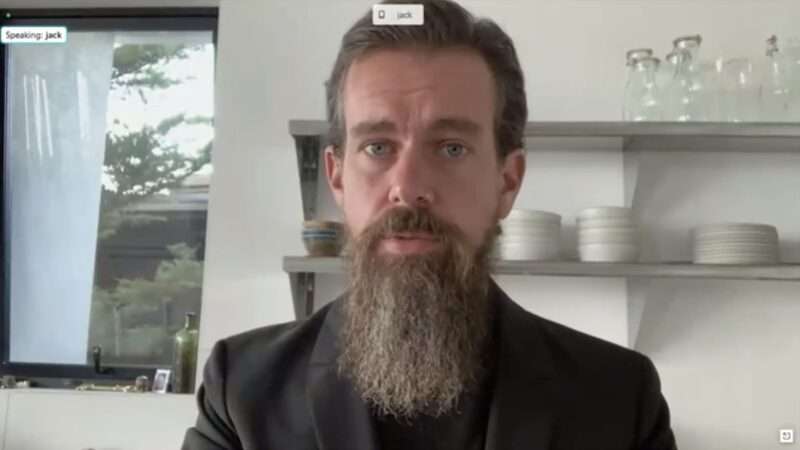On one night in December 1773, patriot activists disguised as Native Americans broke into Griffin’s Wharf in Boston Harbor, boarded three vessels loaded with tea owned by the British East India Company, and dumped it all overboard.
Now immortalized as the Boston Tea Party, this famous theft is celebrated today as a heroic act of resistance against the oppressive British government.
Usually forgotten in the story is Francis Rotch, an American merchant and co-owner of two of the ships invaded that night. Rotch had unwittingly agreed to ship crates containing the controversial tea from Britain. When he arrived in Boston, patriots prevented him from unloading the cargo and British authorities stopped him from leaving with it. In a conflict between crown and colonist, Rotch was squeezed between two sides.
Pharmaceutical giant AstraZeneca is stuck in a similar position today.
The company, The New York Times reports, is currently sitting on some 30 million doses of COVID-19 vaccines in a warehouse in West Chester, Ohio, all vialed up and ready to go. Millions more unpackaged doses are being held at a Baltimore facility, the Times says.
Both clinical trials and the vaccine’s actual use in the 70 countries that have approved it tell us that this is a safe and effective way of preventing COVID-19 infections, hospitalizations, and deaths. Millions of Americans would gladly take it.
Standing in the way of this mutually beneficial exchange is the U.S. Food and Drug Administration (FDA), which is responsible for approving vaccines and has thus far refused to give AstraZeneca’s shots the green light.
Worse still, the Biden administration is forbidding the company from exporting its idle doses to countries that do allow their use, and which have worsening COVID-19 outbreaks of their own.
Much like the forgotten Rotch, AstraZeneca finds itself in possession of some very valuable cargo that can neither be offloaded nor exported.
That raises an interesting question: Would modern Americans be justified in following their revolutionary forebearers’ example and just stealing that shit?
For all its merits as an act of anti-monarchical, anti-monopoly resistance, the Boston Tea Party remains an act of theft—one that ultimately put a private party in its crosshairs. That’s something most libertarians wouldn’t support, except perhaps in the most extreme hypothetical circumstances.
Would equally energized citizens today be justified in forcing their way into that West Chester warehouse and absconding with 30 million doses of life-saving medicine? The heist itself would require a few dozen people willing to offer the AstraZeneca warehouse staff enough cash to look the other way, plus enough refrigerated trucks to carry everything away. Once boosted, there would likely be countless doctors, nurses, and pharmacists eager to help administer a vaccine we have every reason to think is safe and would be saving lives today but for a pathologically risk-averse federal government. And if Americans didn’t want to take it, our vaccine vigilantes could bring the doses out of the country—maybe to Brazil, which has approved the vaccine’s use and where 3,000 COVID-19 deaths were reported yesterday.
Jason Brennan, a professor of philosophy at Georgetown University, says there’s some merit to the idea. Violating the FDA’s prohibition on the use of the AstraZeneca vaccine should trouble no one’s conscience, Brennan says. That prohibition is imposing severe costs on Americans’ lives and livelihoods, and the agency’s refusal to approve the vaccine is motivated by perverse incentives that no one should feel the need to respect.
“If [the FDA doesn’t] approve a drug or if they don’t approve a face mask, if they don’t approve a testing kit for COVID, lots and lots of people die, but no one other than health economists blame the FDA for that,” says Brennan. “But if an FDA approved a drug and it fails or has side effects, people blame the FDA.” The desire to avoid blame encourages the FDA to adopt an overly cautious approach to approving drugs, even in the middle of a pandemic when the cost of that caution is hundreds of lives a day.
Should people manage to acquire the vaccine, they should feel free to take it, Brennan argues. And if AstraZeneca executives find a way to sell it onto a black market, he adds, they should be lauded as heroes.
Of course, AstraZeneca executives are not going to sell their vaccine into the black market, given the many legal consequences. That’s where the heist comes in.
Brennan acknowledges that this is a more difficult calculation. In emergency situations, he argues, theft or trespassing might be justified. “I don’t think property is completely sacrosanct,” Brennan says.
He gives the example of someone who comes across a privately owned cabin while being chased by a bear: You shouldn’t feel bad about breaking into the cabin to escape the animal, although you’ll probably owe compensation to the cabin’s owner after the emergency bear situation has lapsed.
Whether the COVID-19 pandemic counts as a severe enough emergency to justify stealing vaccines from a pharmaceutical company hinges on a lot of details, says Brennan. Stealing the vaccine to give it to an 80-year-old at high risk of dying from the disease is closer to our hypothetical bear victim and would thus plausibly be justified. Stealing it to give to a healthy 20-year-old who faces fewer risks would not.
The coercive force necessary to take the vaccine also needs to be considered, Brennan says. If a few AstraZeneca vaccine vials fall off the back of a truck, then their theft is easier to justify. If one has to shoot a security guard to get them, it almost certainly isn’t.
Revolutionary Bostonians had similar qualms about the destruction of private property during and after the Boston Tea Party. For that reason, they refrained from damaging the ships or molesting their crews during their act of thievery. Patriots even went so far as to replace a privately owned padlock they’d cut when breaking into the wharf.
Only the tea itself was destroyed, which Sam Adams and others later justified as a targeted protest against both unjust taxation and the monopoly privileges given to the East India Company.
One could deploy similar logic to justify the theft of AstraZeneca vaccines. The fact that they’re sitting idle in warehouses is solely the result of government restrictions. Their very existence is also the result of government action, namely a $1.2 billion contract the U.S. government has inked with the company to purchase 300 million doses of the vaccine it refuses to approve.
The anarcho-libertarian philosopher Murray Rothbard—a private property rights absolutist—has argued that forcible confiscation of property owned by state-supported universities and military contractors is justified under a libertarian framework, given that those institutions are bankrolled by stolen tax dollars.
“What of the myriad of corporations which are integral parts of the military-industrial complex, which not only get over half or sometimes virtually all their revenue from the government but also participate in mass murder? What are their credentials to ‘private’ property? Surely less than zero,” wrote Rothbard in a 1969 essay. “To say that their ‘private’ property must be respected is to say that the property stolen by the horsethief and the murderer must be ‘respected.'”
Grant Babcock, an editor at the Cato Institute’s Libertarianism.org and self-described Rothbardian, says there is some truth to that sentiment when it comes to Pentagon contractors. But he doesn’t think the reasoning applies to AstraZeneca or its vaccines.
“The market for fighter jets outside of government demand is basically nil. Whereas a lot of people might be interested in purchasing [a coronavirus vaccine] irrespective of the demand from the government,” Babcock says. “So to that extent, I don’t think we would consider AstraZeneca an arm of the government the way a lot of defense contractors could be.”
The FDA’s restrictions on AstraZeneca’s vaccine are clearly unwarranted, Babcock adds, saying people should be free to consume whatever drugs and medicine they want to. But that still wouldn’t justify theft of a restricted product.
“If there’s an unjust law, you shouldn’t feel too bad about breaking it,” he says. “But in this case, the unjust law is the law that’s prohibiting a transaction for the vaccine. It’s not the laws against theft, which are not unjust.”
Brennan argues that coercing the FDA directly into approving more vaccines would be appropriate, saying “if you could blackmail the head of the FDA to force them to” approve the vaccine “that would be a heroic thing to do. You would be deserving of praise.”
Whether or not that’s morally defensible, it seems like an impractical caper to pull off.
So the FDA’s restrictions on the vaccine remain both lethal and unjust. Yet injuring private third parties to right that wrong remains morally dubious.
Moral calculations aside, it should fill every American with Sam Adams–like revolutionary fervor to know that while some 800 Americans die each day, and countless more labor under governments’ pandemic restrictions, millions of life-saving vaccines sit untouched.
The public policy debate about the pandemic has largely been about what coercive force the government is justified in exercising to prevent infections and deaths. It’s worthwhile to at least think about how much force citizens themselves can use against a government that denies them access to life-saving cures.

from Latest – Reason.com https://ift.tt/3smbmAk
via IFTTT



